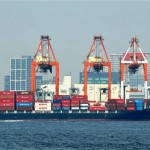Profile of the United Kingdom’s pound – major economic reports
This lesson will cover the following
- Employment change, GDP, industrial production
- RPI, PMI, trade balance
- Housing starts
Major economic reports released by the United Kingdom
Employment change
The Office for National Statistics conducts a monthly survey that classifies the working-age population as employed, unemployed or outside the workforce. The survey provides market participants with insight into labour market trends in the country (employment in different sectors, hours worked, participation rate and the unemployment rate). Labour market conditions provide an indication of general economic health. Improving conditions usually support the pound.
Gross Domestic Product (GDP)
GDP represents the total monetary value of all goods and services produced in the United Kingdom over a specific period, or, put simply, the size of its economy. It is made up of expenditures by the household, business and government sectors, plus net foreign purchases. Rapid economic growth is usually seen as a conduit to inflation, while low or negative growth signals a weak economy or recession. The GDP report carries considerable weight for currency traders. Because it evidences growth in a productive economy (or contraction in an unproductive one), traders view a higher growth rate as an indication that interest rates are likely to be raised.
- Trade Forex
- Trade Crypto
- Trade Stocks
- Regulation: NFA
- Leverage: Day Margin
- Min Deposit: $100
Industrial production
The industrial production index reflects the change in the overall, inflation-adjusted value of output in sectors such as manufacturing, mining, utilities and quarrying, as well as electricity, gas and water supply in the United Kingdom. Manufacturing output, which comprises about 80% of the nation’s industrial production, is a key component of GDP. For that reason the report is closely watched by investors for hints about the current strength of the economy. Numbers suggesting improvement usually provide a boost to demand for sterling.
Retail Price Index (RPI)
Published by the Office for National Statistics, the RPI is a measure of inflation. It reflects the change in prices of a basket of retail goods and services. Market participants tend to pay more attention to another indicator, known as RPI-X – the retail price index excluding mortgage interest payments. RPI-X is the gauge that the Bank of England closely examines when adjusting its benchmark interest rate.
Trade balance
 This indicator is also known as the visible trade balance because it reflects the difference in value between exported and imported physical goods, without the inclusion of services. Since the United Kingdom’s economy is heavily dependent on trade, the visible trade balance is considered a key factor, providing clues about the resilience of the nation’s economic growth. Market participants give greater priority to seasonally adjusted figures reported over a three-month period, because one-month trade data are regarded as less reliable. A contracting trade deficit or an expanding trade surplus will usually support demand for the national currency.
This indicator is also known as the visible trade balance because it reflects the difference in value between exported and imported physical goods, without the inclusion of services. Since the United Kingdom’s economy is heavily dependent on trade, the visible trade balance is considered a key factor, providing clues about the resilience of the nation’s economic growth. Market participants give greater priority to seasonally adjusted figures reported over a three-month period, because one-month trade data are regarded as less reliable. A contracting trade deficit or an expanding trade surplus will usually support demand for the national currency.
Purchasing Managers’ Index (PMI)
 The PMI is based on a monthly survey conducted by the Chartered Institute of Purchasing and Supply (CIPS). It is calculated to reflect activity in sectors such as manufacturing, construction and services in the United Kingdom. For instance, the services PMI is derived from a survey encompassing managers of companies that operate in transportation, communications, IT, financial intermediation and tourism. They are asked for their assessment of current business conditions, including new orders, output, employment and future demand. The resulting PMI is measured on a scale from 0 to 100. If the index shows a value of 100.0, 100% of respondents reported an improvement in conditions. If it shows 0, 100% reported a deterioration. If 100% saw no change, the index will read 50.0. Therefore, readings above the key level of 50.0 indicate expanding activity in the respective sector, which usually supports the pound.
The PMI is based on a monthly survey conducted by the Chartered Institute of Purchasing and Supply (CIPS). It is calculated to reflect activity in sectors such as manufacturing, construction and services in the United Kingdom. For instance, the services PMI is derived from a survey encompassing managers of companies that operate in transportation, communications, IT, financial intermediation and tourism. They are asked for their assessment of current business conditions, including new orders, output, employment and future demand. The resulting PMI is measured on a scale from 0 to 100. If the index shows a value of 100.0, 100% of respondents reported an improvement in conditions. If it shows 0, 100% reported a deterioration. If 100% saw no change, the index will read 50.0. Therefore, readings above the key level of 50.0 indicate expanding activity in the respective sector, which usually supports the pound.
Housing starts
Housing starts, a leading indicator, measure the number of residential units on which construction has begun in a given month. A start in construction is defined as the laying of a building’s foundation. This indicator is relevant to investors, as the housing sector in the United Kingdom is among the industries that support overall economic performance.
